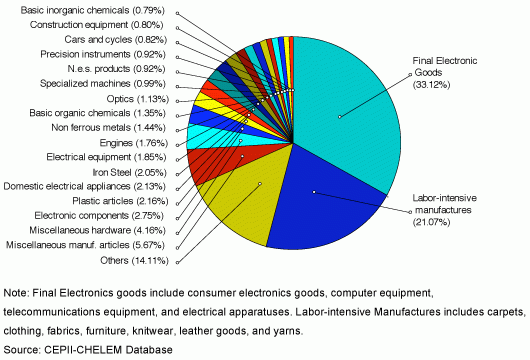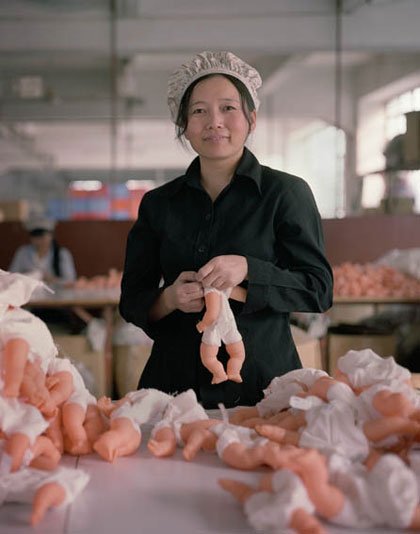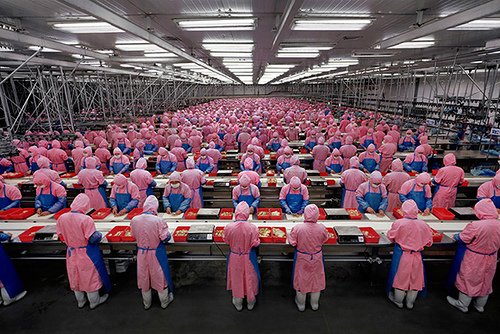Important Factors Affecting Manufacturing in China
From the experts at QualityWars and InTouch Services, here are 5 of the top factors affecting manufacturing in China over the past few years and for several years to come:
-
Automation
Especially noticeable in the past 3 years in China is the implementation of automation to a range of manufacturing processes.
Those who are familiar with Chinese factories will note that even up to 10 years ago many factories in china started to change out workers who operated injection molding machines (a slow, low value-added, process) with robotic arms to remove injected parts from the machine.Now, Chinese manufacturers are regularly looking for affordable ways to cut down on rising worker wages via automation.
Note that labor cost is pretty much the only driving factor in this shift, and that better consistency and accuracy of production is much less of a concern to factory owners. Just yesterday, during an InTouch Supplier Evaluation, we noticed machinery being installed at a Taiwanese-owned cookware manufacturer in Northern China which would allow enameled cookware to automatically be transferred to ovens for a required baking process, once sprayed with enamel.
That implementation of automation would reduce the required workers by 4-5 people on each line. This kind of simple automation (reducing a line by 4-5 workers) can reduce a factory’s costs by as much at 40,000 USD per year in more expensive manufacturing areas such as Dongguan and Shenzhen.
-
Smaller Factories / Less Expansion
Gone are the days when I used to walk into a factory, and at one point it was A LOT of factories, and be shown 5 more empty buildings, or buildings full of machinery, ready for the company’s massive expansion.
So many factories have gone completely out of business in the past 10 years by thinking that one or two years of producing for Walmart meant years ahead of sustainable business, and expanding way beyond their means.Whilst it’s not a trend that covers all industries (there are surely still factories in China that are expanding), based on the thousands of factories that InTouch visits each year I can say that the number of factories who are expanding their physical operations is down by over 80%. Meaning that in 2008, out of every 100 factories we would visit, roughly 30 were undergoing some kind of expansion.
Now, that number is more like 5 out of 100.Factories in China are learning that they need to be the “right” size to succeed, compared with the philosophy that “bigger is better”, which was clearly guiding factory’s decisions 5 years ago.
-
Chinese Brands / Chinese Market
The China market is one of the largest and most talked about in the world, factories are not ignoring this.
- Factories may favor just producing for china market if possible; there’s a lot less paperwork, and investment in other areas like English speaking staff
- However, in some cases there’s bigger barriers to entry than the export market since it may depend heavily on relationships to get into the Chinese market
- The Chinese factories are learning from the West in a big way when it comes to developing their own brands, and the Chinese do it direct from the factory floor, cutting out lots of costs. Brands like Peak and Li-ning, both Chinese born and bred footwear brands, have tremendous market-share in China and were born from the factory floor
-
Improving Worker Conditions
Another factor driven by cost, but with far reaching social benefits, is improving conditions for workers.
The key areas we see making regular improvements are:- Compensation (including Benefits) – on average wages in China have increased 14% per year for the past 10 years, and is likely to be true for several years to come.
- Working and living conditions – improving, but definitely still nowhere near western standards, that said, factories now need to work harder to retain workers
- Training and career development opportunities – factories are under significant pressure to keep their workforce; more than ever. This has resulted in both factories and other Chinese companies starting to offer a more career development oriented outlook to their workers, including training. -
Migration Inland
Already a well documented change in China, with living costs rising so much on China’s “gold coast”, workers are preferring to stay at home and take lower paying jobs (or farm) and have lower costs of living.
More and more the Chinese population is choosing to spend more time with their family, skipping the intense hardships of living far away and working long days and nights.
Additionally, better infrastructure (roads, customs, ports, etc.) means that factories can be further from the coast and still be competitive, allowing the factories that have moved inland, or are developing in inland areas, recruit low-cost local workers.
It’s clear to those of us who live and work in China that the rising costs are pushing BOTH workers and factories inland, both together, and separately.




